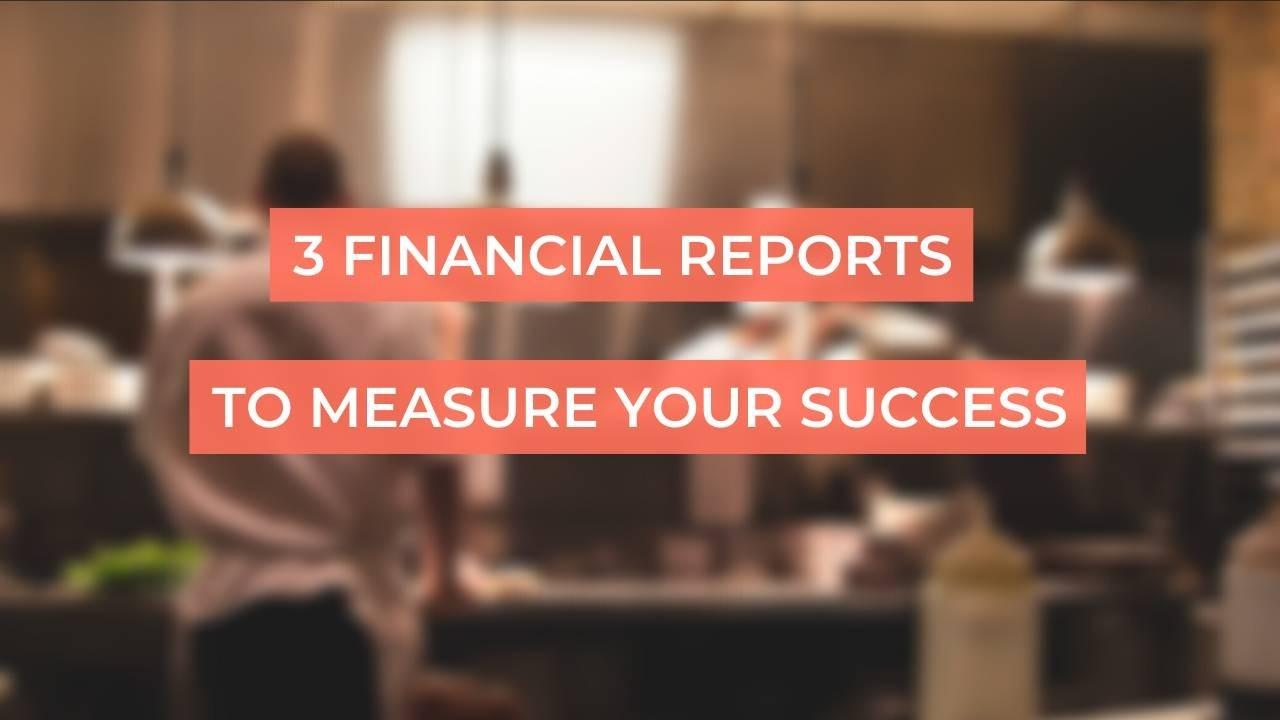3 Must Have Financial Reports for Restaurants

I talk about profitability a lot – because you’re in business to make money, not be a charity. Knowing your numbers and understanding your financial reports are a big part of being profitable. So, watch the video below, or keep scrolling, to learn about three financial reports you must understand and review every single month if you want to make money in your restaurant.
I talk about numbers numbers numbers numbers, right? I'm a numbers geek, and I talk about the systems restaurant’s should put in place to make money. I talk about getting your life back and putting a management team in place. Here's the deal: that which we measure improves and the only way to improve is to have measurements in the first place. There are three financial reports that are a must have to give you every opportunity to make the money you deserve.
The three financial reports you must have in your restaurant are:
- a balance sheet
- a profit and loss statement
- a cash flow report
Let's go through each one
A balance sheet is stuff and who owns the stuff? Why do you need to pay attention to that? Well, here's the deal. When you're working with your accountant, make sure they tie out every one of those accounts. They reconcile every one of those balance sheet accounts assets and liabilities. And when they do so, if they do that on a monthly basis, whatever your profit and loss number is it is 100 percent accurate. You may have missed categorized bottled beer into draft beer but your profit and loss – or what you're going to be responsible to pay taxes on - is 100 percent correct.
Are you working with a CPA or an accountant that is tying those books out each month? If not, you're paying for it with extra time and money at the end of the year when they do your taxes and then do that same process.
The next piece on that balance sheet is doing your current ratios. It's your current assets divided by your current liabilities. And we're looking for a one to 1.25 ratio. I need to have a $1.25 in current assets to pay for every dollar in current liabilities. With that kind of ratio, you've got money and product and things to use the next 12 months for the money you’ve got to spend the next 12 months. You're a healthy company.
When I used to be a franchise owner, and I was turning around a failed company really should've been bankrupt, my ratio was a .42 to one. I had 42 cents to every dollar I owed. You want to know the health of your business, your balance sheet can tell you.
How about that profit and loss statement, that operating statement, that income statement? They are all the same thing - just labeled differently. Is it accurate? Are you giving your CPA or your bookkeeper your chart of accounts? Are you splitting it up by category, such as food, bottled beer, draft beer, wine and liquor? Are they separate? Are you doing cost of goods sold separately and making sure that you’re taking your use divided by category sales so bottled beer – use divided by category bottled beer sales - to know our actual cost of goods sold? Or are they following gap and giving you a really low cost of goods sold because they're doing it off of total sales? Are you using your report card? The profit and loss (the P&L) is your report card. It tells you if you did a good job running your business, which means every line item in your chart of accounts needs to be detailed. Every position – servers, bartenders, bar backs, bussers, hosts, cooks, prep cooks, dishwashers, if you're quick serve, do you have lobby people, do you have drivers, do you have cashiers – all split out so you can measure every line item on your chart of accounts? This is something to communicate to your CPA or bookkeeper so that when you look at that number, you know what goes into it. If you don't have a good P&L, how do you know whether you're operating properly?
Last but not least, the most important report is a cash flow report. I'm not talking about that crappy cash flow report most accounting software gives you. That's a rearview mirror perspective that tells you how you did the last month. It’s where you started with cash and where you ended. No, I'm talking about putting together a 52-period cash flow report starting every single month, reconciling where your checking account is and putting where your accounts payable is and what your target cost of goods sold is going to be, where your sales are. You want detail so that you can see on week 34, because sales are low and you're in your lowest part of your season, that you're going to need $7,000 in your bank account that you can operate even if you operate perfectly.
Cash flow is incredibly important. I always ask people: what pays your bills cash or profits? The answer is cash. Last time I checked, I can't go to the power company with a case of stakes, drop them on the counter – THUD – and say, “There, we’re even.” So, if you want to control your business, you must know your financial reports, especially your balance sheet, profit and loss statement and your cash flow report.
If you would like to learn more about the importance of systems and how to run a restaurant, read our free special report, Is Your Food Distributor Screwing You? 5 Things You Can Do Now to Lower Food Cost. Download it here. Be sure to visit my YouTube channel for more helpful restaurant management video tips.




